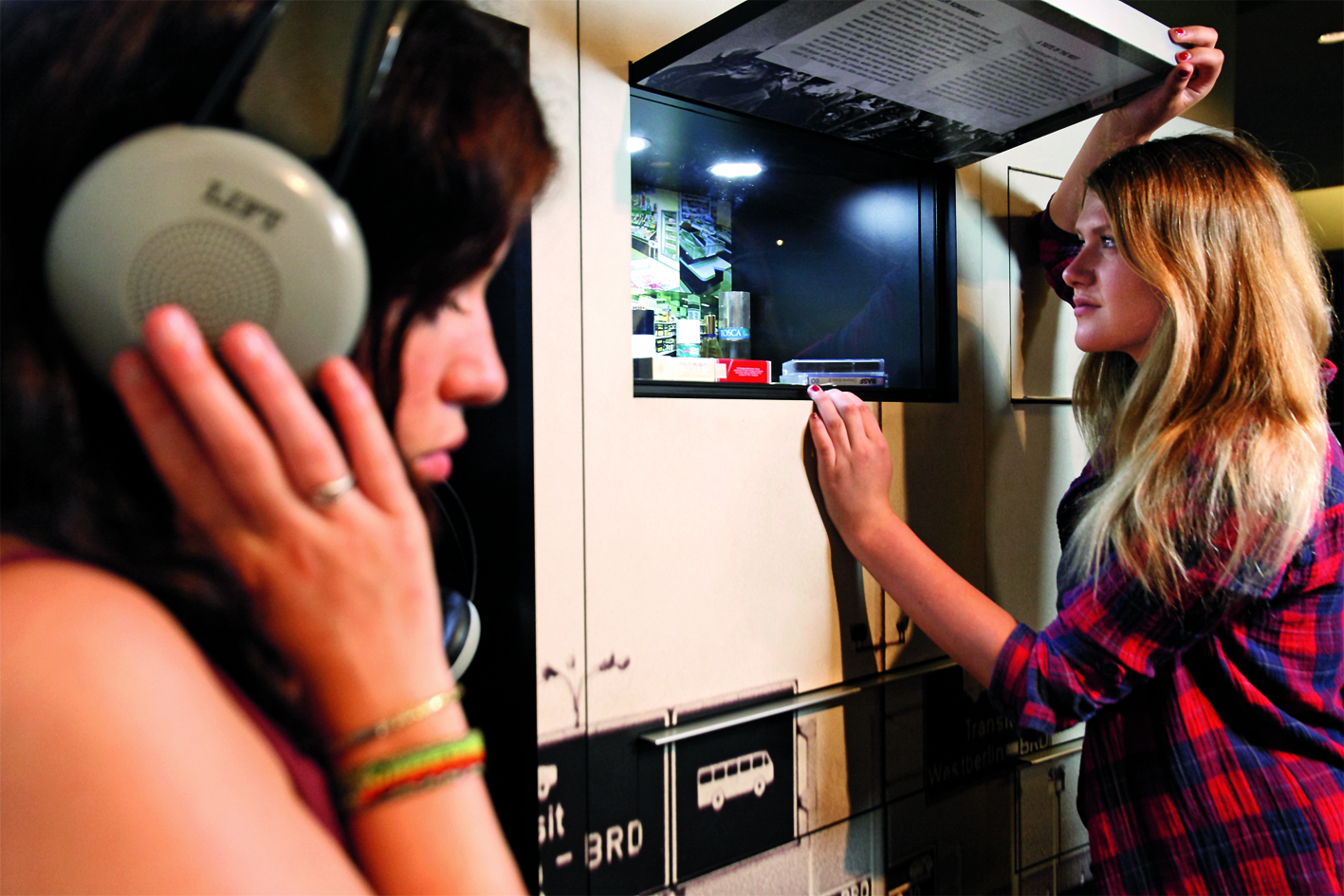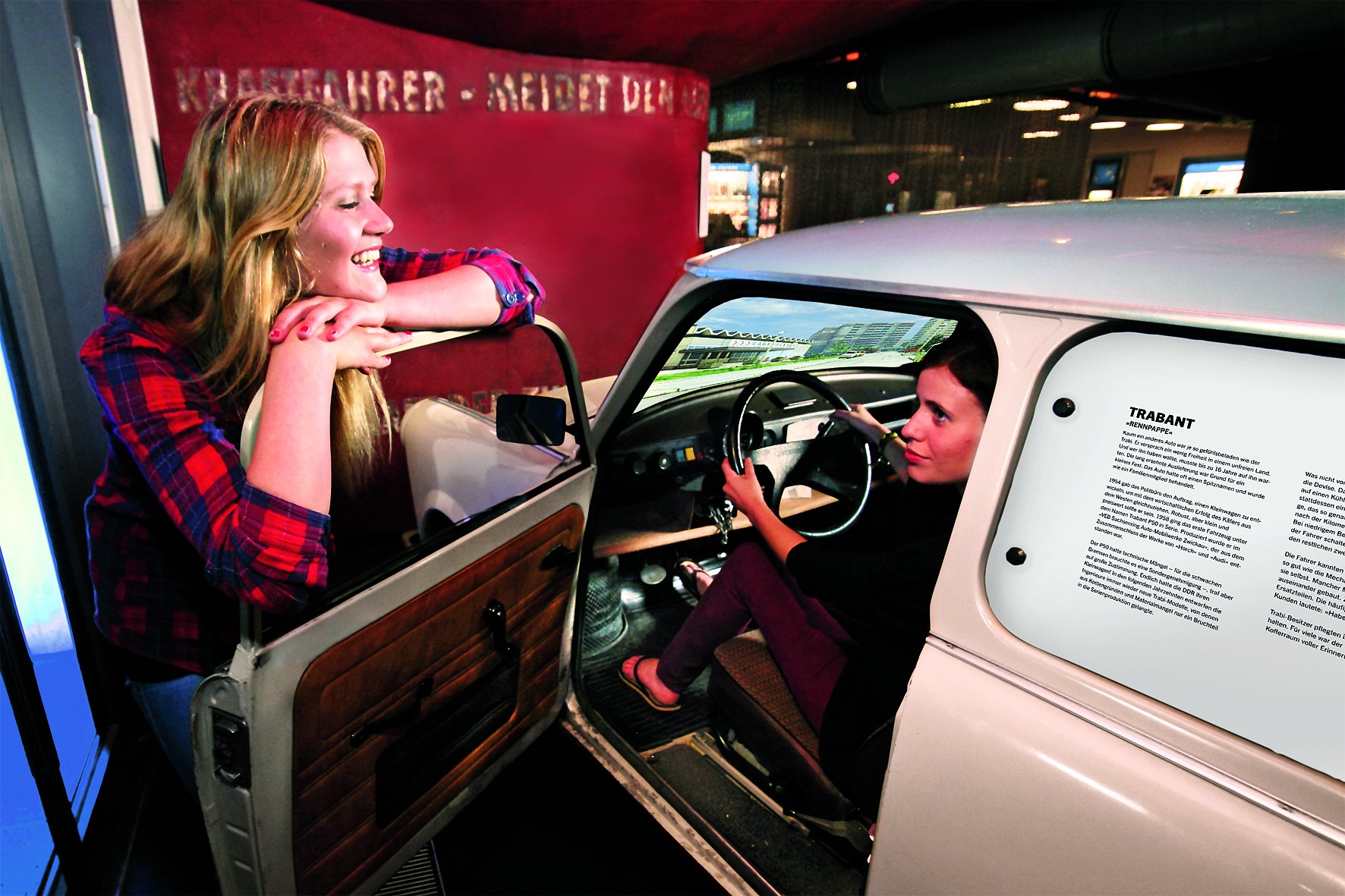Die Wende: From East Germany to Post-Chavista Venezuela
After the fall of the DDR, Germans sought to turn tragedy into remembrance. Perhaps, when chavismo is over, because it will be, we can take a page from the Germans’ book and adapt the idea to build the Post-Chavista Museum we’ll need so it never happens again.


Photo: José González Vargas
How do you talk about something past, yet utterly present?
For the middle-aged Germans visiting the DDR Museum—some amused, others mourning—it’s like a trip down a formerly mined memory lane, now harmless through time and distance. The life you once knew, the oppressive regime you took for granted, is now an exhibit for children and tourists.
Imagine a Venezuela where we can say the same.
Usually, when talking to Venezuelan colleagues, the half-joking premise of a Museum of Chavismo pops up, an institution located in the vague idea of a Post-Chavista Venezuela, that catalogues and exhibits the corruption, abuse, mismanagement and violations performed by the “revolution” since 1999.
Considering that nothing of what’s happening to us is original, it’s not a bad idea to see the DDR Museum, dedicated to life in East Germany, for what others have done with the story we’re currently living.
While one can know the basics—single-party dictatorship, the all-seeing Stasi, the Berlin Wall—sometimes you forget that, for many people, this is their past and, in many ways, their present. The man in front of me waved amused to his companion a greenish East German ID card; another fellow, just leaving the museum, cheerfully whistled Auferstanden aus Ruinen. Through a window one could see children in the museum poking a Trabant, one of the worst automobiles ever made.
I can’t help but have a twitch in my eye because of the similarities with my own country. East Germany was ruled by the SED, the Socialist Unity Party, whose only opposition were dismal, powerless parties. During its 40-year history, it ran a planned economy defined by scarcity and low-quality goods, with an infamous intelligence service that “knew everything about everyone.”
Yet hyperinflation is a game you cannot win. By the time the perennial leader, Erich Honecker, stepped down, the GDR was asking the West for loans just to pay the interest of previous loans. Communist deputy Egon Krenz received power, but alea iacta est.
Berlin museums are an example of how people bring themselves together after near-Apocalypse. The detailed horror of the Gestapo and the Nazi regime at Topographie des Terror, and the bureaucratic and dehumanizing abuse at the Stasi Museum are a statement, but the best description I can come up for the DDR Museum is, basically, a Museo de los Niños about a failed socialist state.

© DDR Museum, Berlin 2017
Hosting over 250,000 objects, the place is divided into sections. Most of the exhibits are in large cabinets that you open to see everyday objects from the DDR, along with descriptions and data. In many cases, there are reproductions from originals that you can handle, inspect, and even play with.
For instance, in the school and education section, you go through the East German school system, from kindergarten to college (or, more likely, trade school). You open a lid and read about the communal potty training, the next drawer has drawings of children hugging soldiers and cheering for the government, the next is filled with textbook reproductions.
In news and entertainment, there are newspapers, snippets from radio and TV, and a continuous projection of their Noticiero de la Patria; in sports and athletics, they compared the performance of East Germany and West Germany in the Olympics and, in holiday and travel, they had a map of the few places the privileged could go to.
But where the museum truly excels is at how interactive and detail-oriented it is. You slide in your hand into Kaffee-Mix while reading about the coffee crisis of the late 70s, you turn a crank to see puppets of the opposition parties, cheerfully voting for laws the SED needed. You even have Haunted Mansion-style portraits of Engels, Marx and Lenin moving, and in true Museo de los Niños fashion, you can pretend-drive a Trabant with windshield projection.

© DDR Museum, Berlin 2017
But no doubt the most impressive element of the DDR Museum is their recreation of a pre-fab WBS 70 apartment, from shelves filled with boxes and cans from the era, to a computer-generated window view of apartment blocks with young pioneers and Trabants through the streets.
In the living room, a TV set ran clips from three or four East German shows, the most notable being Der schwarze Kanal, their version of La Hojilla, where a government pundit would show clips from West Germany and explain how these were filled with lies against the German Democratic Republic.
Today in Alexanderplatz, the iconic Berliner square that saw massive protests, you can buy pieces of the wall, old Soviet hats and Karl Marx piggy banks, among other Ostalgie knick-knacks. In Checkpoint Charlie, the crossing point between the divided Berlin, you can take pictures with actors dressed as U.S. soldiers, waving Old Glory while Starbucks and McDonald’s loom in the back.
One is tempted to declare Germany’s case as a clear triumph of Western liberal democracy, particularly since Germany is now the fourth largest economy in the world, the first economy of Europe and, along with France, one of the pillars of the European Union.
Yet not all that glitters is gold: after a difficult political and economic transition, the region has flirted with Die Linke—a far-left party partially formed by remains of the SED—also a cradle for far-right movements, with Alternative für Deutschland being the most recent.
It’s still a long way until we have a Post-Chavista Venezuela with its own Museum of Chavismo. It’ll take a long time and patience to rebuild the country, and when that happens—that’s a when, not an if—here’s an example of another people who took a good look at themselves and, with honesty and pain, grew united, stronger into the future, while looking at the warnings from the past.
It can be done. We can make it.
Caracas Chronicles is 100% reader-supported.
We’ve been able to hang on for 22 years in one of the craziest media landscapes in the world. We’ve seen different media outlets in Venezuela (and abroad) closing shop, something we’re looking to avoid at all costs. Your collaboration goes a long way in helping us weather the storm.
Donate




